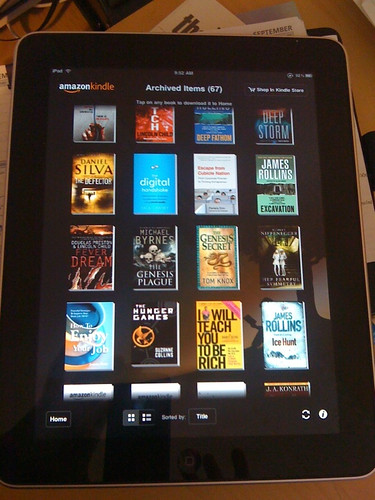This post, by Doug Klostermann, originally appeared as a guest post on Joanna Penn’s The Creative Penn on 11/8/11.
Every day we hear more exciting news about self-publishing and the growth of ebooks.
I monitor the US publishing news and blogs and feel that in the UK we are at least a year behind you guys, but the tidal wave is swelling and it’s a very exciting time! Doug Klostermann, author of The Ebook Handbook, is another writer who is passionate about digital publishing and today he shares a useful overview if you are just starting out.
Why now is the time to join the e-book revolution

Statistics about e-books, e-book publishing, and e-readers are being reported and discussed with increasing frequency and the overall conclusion is clear: e-book sales are rising at a dramatic pace. E-book sales in the United States currently exceed those of the other formats, including hardback and paperback sales, and grew 200% from 2010 to 2011. Electronic books are now outselling printed books on Amazon.com – hardcover and paperback combined – and the Kindle e-reader is the best-selling product on Amazon. Apple’s iPads are selling by the tens of millions, Android powered tablet sales are increasing, and numerous other companies are developing and selling tablet devices. There is no better time to join the e-book revolution.
The publishing playing field has never been so level for self-published, independent authors. Your e-books can be up for sale on Amazon, Barnes and Noble, and Apple iTunes and iBooks as soon as you complete them, and at no cost to you. They will be available on these sites along with all the printed and digital books, with the potential to be found and purchased by anyone shopping and searching online.
Formatting and Optimizing Your Text for Various E-Reader Formats
You will likely want to publish your e-book to as many sites as possible in order to reach the widest audience, and this involves offering your text in a variety of formats. Most publishers will convert your text for you for free, but there are a number of requirements you should follow so that your e-book functions and appears as best as possible in each format. On your own website and blog you can offer your e-book in PDF format, Amazon will convert it to their proprietary AZW format for the Kindle, and Barnes and Noble will convert it to ePub for the Nook. Smashwords will convert it and offer it in a variety of formats as well as allow you access to publishing with Apple. [Note from Joanna: This is the best way for non-US citizens to get onto iPad and Nook right now.]
Typically a basic e-book can be written in Microsoft Word DOC (.doc) format. This format is easily converted to most of the required e-book formats such as PDF and ePub, is the preferred format to be submitted to Amazon’s Kindle Direct Publishing, and can be submitted to Barnes and Noble’s PubIt! and to Smashwords for conversion and distribution to Apple iBooks. Publishers will accept other formats like plain TXT, PDF, or HTML, but unless you have complicated formatting and complex image layouts (neither of which are recommended, especially for your first e-book), then Word’s DOC format is the easiest and best format to use.
Read the rest of the post on Joanna Penn‘s The Creative Penn.
